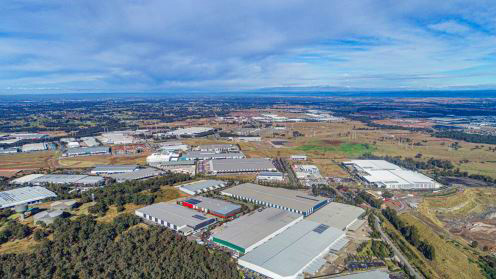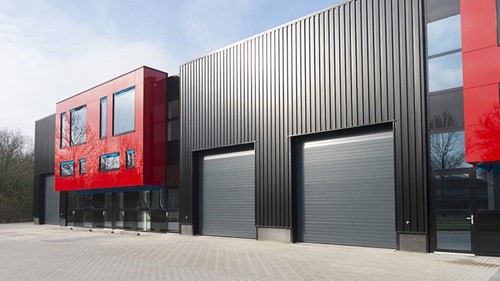Australia’s I&L vacancy rate now world’s lowest
Australia now has the lowest industrial and logistics vacancy rate in the world, after falling to 0.8 per cent through the first half of 2022, with Sydney and Perth the tightest markets.
Australia now has the lowest industrial and logistics vacancy rate in the world, after falling to 0.8 per cent through the first half of 2022 (H1 2022).
From an end-of-2021 figure of 1.3 per cent, already the country’s lowest on record, CBRE Research captured a further tightening across Australia’s five major markets.
That makes Australia the nation with the lowest vacancy rate, ahead of Sweden (1.1 per cent), end-of-2021 leader Belgium (1.3 per cent), the United Kingdom (1.6 per cent) and Hong Kong SAR (2.3 per cent).
The global average at the end of H1 2022 was 2.7 per cent, with mainland Europe as a collective and the United States sitting at 2.6 per cent and 3.1 per cent respectively.
Sydney has Australia’s lowest vacancy rate following a further reduction from 0.4 per cent to 0.3 per cent over the past six months.
That is also the lowest of any major city around the globe, ahead of Los Angeles (0.5 per cent), Gothenburg (0.9 per cent), Seoul (1.0 per cent) and Auckland (1.0 per cent).
“From 6.3 per cent at the end of 2019, Australia’s I&L vacancy rate has trended down, to its current record low of 0.8 per cent,” Sass J-Baleh, CBRE’s Head of Industrial & Logistics Research Australia, said.
“Although vacancy rates around the globe have also fallen over the past 12 months in particular, Australia now has the lowest national vacancy rate globally, and Sydney the lowest vacancy rate of any city.
“With Australia’s highest vacancy rate in any market now just 1.4 per cent in Brisbane, the downward movement recorded for each market reflects the current chronic undersupply.
“Australia has a relatively low share of developments that are speculative, especially compared to other major markets, so we are unlikely to see vacancy rates change significantly over the next 12 months.”
| H2 2021 vacancy rate | H1 2022 vacancy rate | |
|---|---|---|
| Sydney | 0.4% | 0.3% |
| Melbourne | 1.3% | 1.1% |
| Brisbane | 2.3% | 1.4% |
| Adelaide | 1.6% | 0.9% |
| Perth | 1.8% | 0.5% |
A dearth of opportunity is driving significant rental growth, with super prime grade rents rising a national average of 13 per cent year-on-year to the end of June, already exceeding CBRE’s full-year forecast of 12 per cent.
For those fortunate enough to have invested in commercial real estate, rental growth has been most pronounced in Sydney, currently sitting at 23 per cent year-on-year, followed by a 17 per cent rise in Perth and 14 per cent in Melbourne.
“The depth in demand is giving owners and developers significant choice, and only occupiers with the strongest covenants are winning the right space,” said Cameron Grier, Regional Director of CBRE Industrial & Logistics in Pacific.
“We expect demand to continue to outpace supply this year and into 2023, and we are seeing rental growth above CBRE Research forecasts.
“New buildings in the 4,000sqm-5,000sqm range in Western Sydney, for instance, have broken past the $170/sqm net barrier, which is about $30/sqm more than they were at the start of the year.”
In line with the reduction in available supply, net absorption through the first half of 2022 fell by approximately 40 per cent against H2 2021, with the national figure 1,400,000sqm.
Most of Australia’s major markets have high pre-commitment levels on supply in the pipeline, including Sydney with 73 per cent of the city’s incoming 875,000sqm.
“Speculative developments only account for 33 per cent of the floorspace in Australia’s pipeline, compared with 76 per cent in the USA, 57 per cent in the UK, 48 per cent in Spain and 43 per cent in Germany,” Ms J-Baleh added.
“That means the Australian market is less susceptible to volatility and major fluctuations in supply and vacancy levels moving forward.”
Around the country
Mr Grier said Perth and Sydney remain the tightest held markets in the country and are seeing rental growth above their initial forecasts at the start of the year.
“At the halfway mark of the year, demand continues to outstrip new supply.
“While our teams have started to witness nervousness from occupiers with some requirements now delayed or cancelled due to economic headwinds seen locally and overseas, we expect demand to continue to outpace supply this year and into 2023.”
He said Melbourne was getting tighter by the month and Queensland remained the only market balanced with supply.
“With rapidly increasing construction pricing and perceived future softening of long WALE (weighted average lease expiry) assets, we expect further pressure on rents this year,” Mr Grier said.

Raffles Glade, Eastern Creek NSW, within Sydney’s Outer North West Precinct, where the vacancy rate now averages 0.3 per cent.
Sydney’s vacancy rate of 0.3 per cent is on a par with only a region of southern California as the world’s lowest, and has resulted in occupier movements coming to halt due to the absence of available space.
Michael Owen, CBRE Managing Director Western Sydney, said there has been rental growth above 10 per cent in 1H22 in most precincts.
“There will be increased pressure on rents with increasing construction costs, especially as we approach the Christmas period, with close to 0 per cent vacancy.
Like Sydney, the record low availability of vacant floorspace in Melbourne has led to strong growth in super prime and prime grade stock, with rents having grown by 13.9 and 11 per cent respectively in the past 12 months.
Brisbane’s market has recorded the largest decline in vacancy over the past year, to be now averaging 1.4 per cent.
Occupier demand over the past six months has been driven primarily by the retail trade and manufacturing sectors (each 35 per cent).
Continued activity in Western Australia’s resources sector and ongoing construction delays are likely to result in continued upward pressure on rents and land supply there.
The industrial vacancy rate in the Perth market has continued to decline and now sits at just 0.5 per cent.
Tenant demand has been primarily driven in the industrial market by transport, postal and warehousing; retail trade; and mining sectors. Increased demand from online retailing is expected continue driving the state’s industrial and logistics market.
Adelaide’s market has also dipped below 1 per cent, to 0.9.
CBRE State Director John Kies said rental growth has become a material trend within South Australia’s I&L market due to historically low vacancy and limited options for tenants.
“We expect this rental growth trend, as well as the imbalance between the lack of supply and strong demand for developable industrial land will continue to drive the sector’s sentiment in a positive direction.”




















